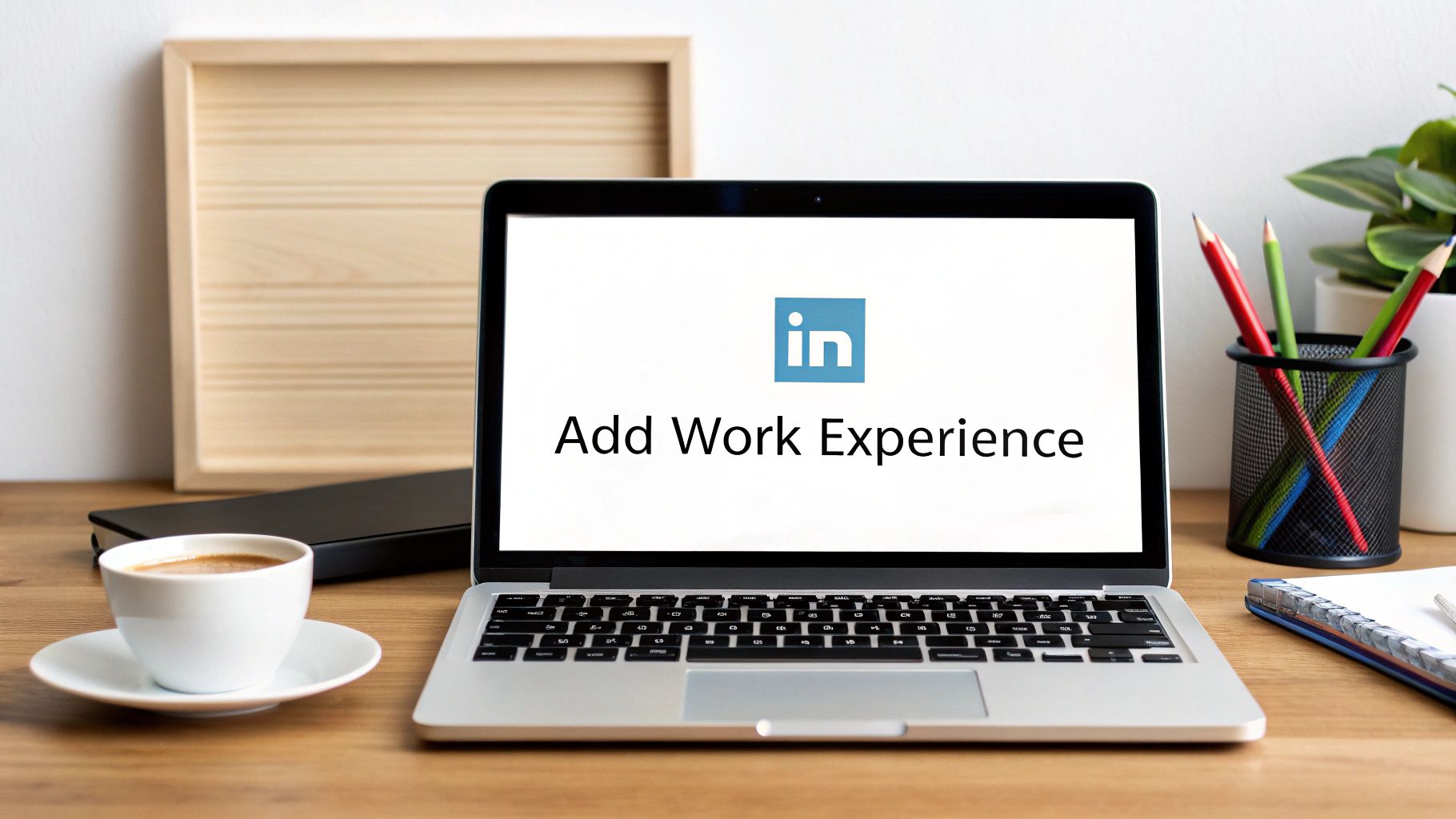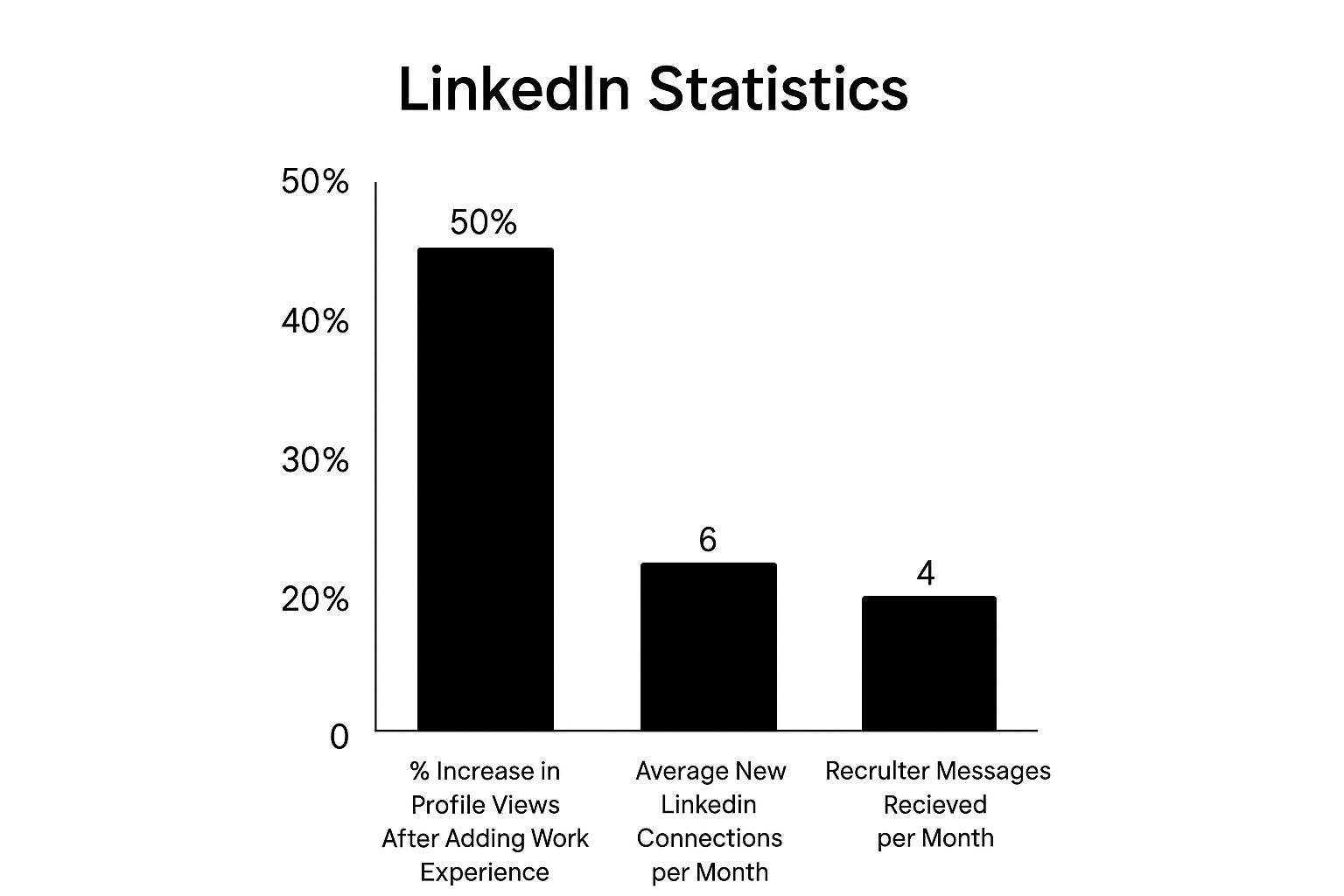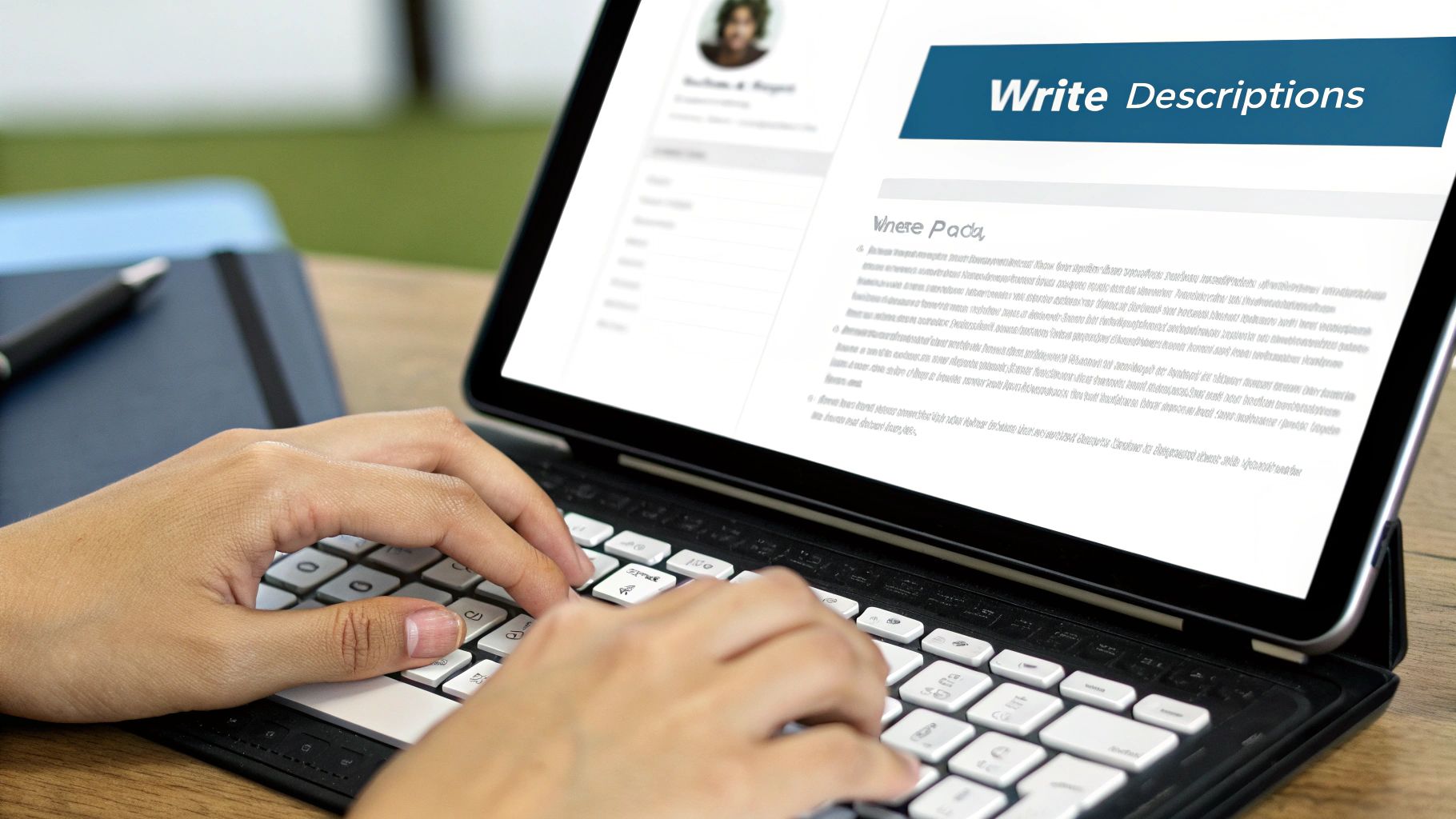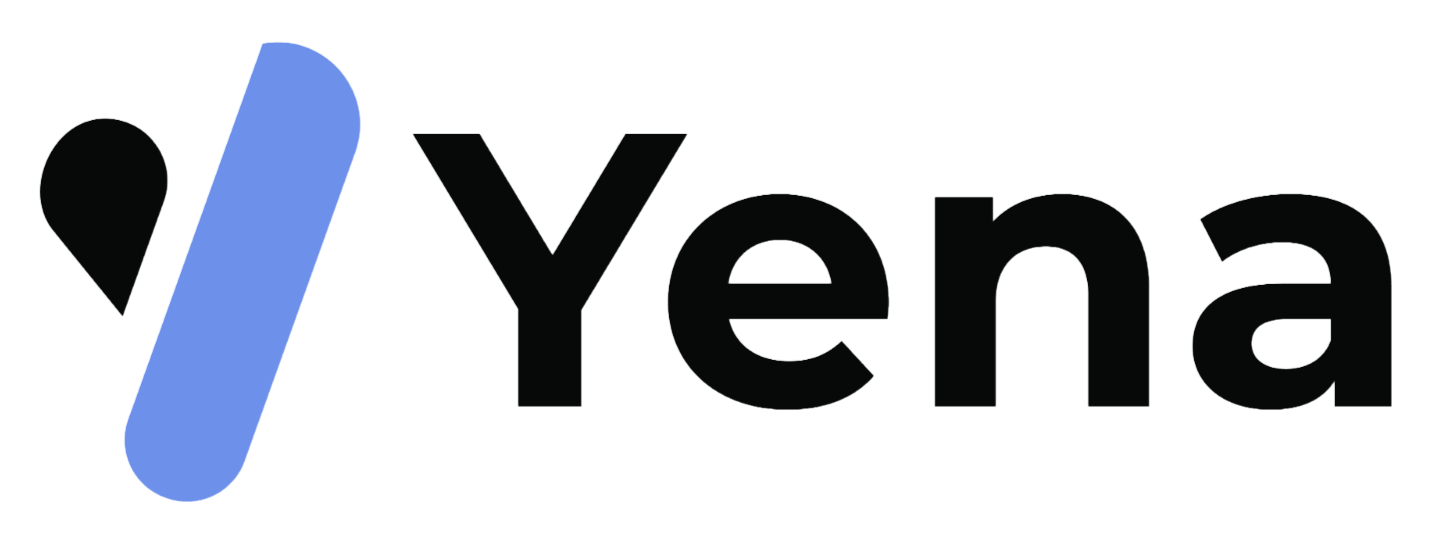How to LinkedIn Add Work Experience Like a Career Strategist
- Janis Kolomenskis
- Jun 22
- 11 min read
Updated: Jun 25
Why Your Work Experience Section Is Your Career Game-Changer
Your LinkedIn profile is so much more than a digital CV; it's your professional storefront. While it's tempting to get caught up in crafting the perfect headline or picking a great profile picture, recruiters consistently say the Work Experience section is where they spend the most time. This is where your career story truly comes alive, shifting from a simple job title to showing real impact and growth. It’s the core of your professional narrative, offering solid proof of your skills and achievements.
The Recruiter's Perspective
Imagine a recruiter sifting through hundreds of profiles. They're on the hunt for clear signs of skill and a good fit for the role. A well-written experience entry is like a powerful magnet, stopping their scroll. It’s not just about listing what you were told to do; it’s about showcasing what you actually accomplished. Instead of saying you "managed social media," you can show you "grew audience engagement by 40% in six months." This small change from responsibility to results makes a world of difference, turning a passive list into an active demonstration of your value.
This idea is recognised globally, but it’s especially powerful in growing markets. For instance, recent data from Latvia reveals that professionals who detail their job histories with specific roles and achievements see up to a 65% higher profile view rate from recruiters in the Baltic region. You can dive into the data behind these LinkedIn trends to get the full picture.
More Than Just a List
When you add work experience to LinkedIn with care, you give context that a job title alone never could. You can even see in LinkedIn's own guidance how each entry is designed to be a mini-case study.

As the screenshot shows, adding a new role isn't about filling a single box. It's a chance to tell your story through multiple fields. Taking the time to fill these out properly transforms your profile from a static document into a dynamic portfolio that directly answers a recruiter's most important question: "What can this person do for us?"
The Smart Way to Add Work Experience on LinkedIn That Gets Results
When it's time to actually add work experience to your LinkedIn, most people just fill in the basic fields and call it a day. But hold on! This is your chance to gain a real advantage. While the steps are simple, the strategy behind what you write is what turns a static, boring profile into one that actively pulls in opportunities. This isn't just data entry; it’s about telling a powerful story about your career.
Handling Tricky Career Scenarios
Let's be real, almost no one has a perfectly straight career path. Maybe you've got employment gaps, a collection of freelance projects, or you've made a major career change. The secret is to present these situations with confidence and clarity.
For freelance or contract work: Instead of listing every single short-term gig (which can look cluttered), group them together. Create one entry like "Freelance Marketing Consultant" or "Independent Web Developer." Then, use the description to show off your best projects and most impressive clients. This frames your experience as consistent and highlights your high-level skills.
For career gaps: Honesty is the best policy, but you don't need to write an essay. You can briefly mention a gap in your main summary or use the description of the job you had before the gap to talk about your transition. Always focus on what you gained during that time, whether it was new skills, personal projects, or volunteer work.
Leveraging the Details
Beyond your job title and company name, the small details pack a big punch. When you add a new role, LinkedIn will try to link it to an official company page. Always select the correct one from the dropdown menu. This connects your profile to that company's entire network, instantly boosting your visibility.
For location, think strategically. You can list a wider metropolitan area, like "Riga, Riga, Latvia," to show up in more searches. This is especially useful if you’re open to remote or hybrid roles and want to cast a wider net.
To really understand what to fill in and why, here’s a breakdown of the fields available for each work experience entry.
Field Name | Required/Optional | Impact on Visibility | Best Practice Tip |
|---|---|---|---|
Title | Required | Very High | Use a clear, industry-standard title. Avoid internal jargon. |
Employment Type | Required | Medium | Helps recruiters filter for specific roles (e.g., Full-time, Contract). |
Company Name | Required | Very High | Always link to the official company page for network benefits. |
Location | Optional | High | Use a broader metro area to appear in more regional searches. |
Start/End Date | Required | High | Crucial for showing career progression and experience length. |
Industry | Required | High | Ensures you appear in industry-specific searches by recruiters. |
Description | Optional | Very High | Use bullet points with keywords and metrics to showcase achievements. |
Profile Headline | Optional | Very High | Auto-updates with new roles; customise it for better branding. |
Skills | Optional | High | Link up to 5 top skills to this role to validate your expertise. |
Media | Optional | Medium | Add project links, images, or presentations as proof of your work. |
As you can see, the "optional" fields are where you can really make your profile shine. Taking the time to fill them out properly tells recruiters you're a serious and detail-oriented candidate.
The following infographic paints a clear picture of how a detailed experience section can supercharge your profile's performance.

The data is undeniable: a complete work history directly leads to more profile views, more connection requests, and most importantly, more messages from recruiters. For businesses looking to hire, knowing this can shape better recruitment strategies. You can find more insights in our guide on how to post a job on LinkedIn with strategies that work.
Writing Job Descriptions That Make Recruiters Take Notice
Alright, you've filled in all the basic fields. Now for the fun part—and the part where most people stumble: the job description. It's so easy to just copy and paste from your old CV or scribble a single, bland sentence. Let's not do that. Recruiters are skimming dozens of profiles, and you have seconds to show them you’re the real deal. Your goal is to go beyond listing duties and start showcasing your measurable impact.

From Responsibilities to Results
Think of yourself as a storyteller. Your experience section shouldn't just be a list of what you did; it should tell the story of why it mattered. For instance, instead of saying, "Managed social media accounts," flip the script to something like, "Grew Instagram follower count by 25% in one quarter through a targeted content strategy, leading to a 15% increase in inbound leads."
See the difference? The second example is a mini case study. It uses the STAR method (Situation, Task, Action, Result) to paint a vivid picture. It’s specific, packed with data, and clearly shows how you contributed to the company's success. That’s what gets a recruiter to stop scrolling.
Structuring for Skim-Readability
Let's be honest, no one is reading a massive block of text. You need to organise your descriptions so they can be absorbed in a glance. Here’s a structure that works wonders:
Kick off with a one-sentence summary: Give a quick snapshot of your role and what the company does.
Use 3-5 powerful bullet points: This is your highlight reel. Start each one with an energetic action verb like "Launched," "Negotiated," "Increased," or "Developed."
Weave in your keywords naturally: As you describe your achievements, think about the skills and tech that are central to your field. When you add work experience to LinkedIn, its algorithm is on the lookout for terms like "SaaS," "Project Management," or "SEO." Sprinkling these in helps you show up in the right searches.
Getting these descriptions right is a skill, much like how companies work to attract top people. To get inside a recruiter's head, you might find it helpful to look at how they approach it from their side. Checking out insights on writing a job description that actually attracts top talent can give you a brilliant new perspective.
Mastering LinkedIn Keywords Without Sounding Like a Robot
When you add work experience to your LinkedIn, you're trying to catch the eye of two very different audiences: the human recruiter sipping their coffee and the algorithm that puts your profile in front of them in the first place. The trick is to speak the algorithm’s language without sounding like a machine yourself. Think of keywords as signposts, not just buzzwords. These are the specific phrases—like “SaaS Sales,” “Agile Project Management,” or “Full-Stack Development”—that recruiters are typing into their search bars every single day. Without these signposts, your profile is essentially hidden.
Your first move should be a bit of detective work. Don't just guess which terms are important. A fantastic way to start is by analysing job descriptions for roles you're excited about. Notice any recurring skills, software, or qualifications? Jot them down. This list is your keyword goldmine because you're basically figuring out exactly what hiring managers want before they even find you.
Weaving Keywords into Your Story
Once you have your list of powerful keywords, the real craft begins. You need to naturally weave them into your story, especially in your achievement-focused bullet points. The goal is to create a compelling narrative that also happens to be perfectly optimised for searches, not just a bland list of skills.
For instance, a pretty standard entry might just say:
Responsible for managing projects.
But a keyword-rich, human-friendly version tells a much better story:
Led cross-functional teams using Agile Project Management methodologies to deliver a new CRM platform 20% ahead of schedule.
See the difference? This version feels authentic, highlights a clear result, and includes the exact keyword a recruiter is looking for. It's all about showing what you did, not just telling them your duties.
To help you get started on your own keyword research, here's a quick comparison of a few simple but effective methods.
Research Method | Time Investment | Keyword Quality | Best For |
|---|---|---|---|
Analysing Job Postings | Medium | High | Targeting specific, desired roles and industries. |
Reviewing Competitor Profiles | Low | Medium | Quick insights into common industry language and skills. |
LinkedIn Skill Suggestions | Low | Good | Finding algorithm-approved terms related to your current role. |
Industry Reports & Articles | High | High | Discovering emerging trends and future-focused keywords. |
Ultimately, picking the right research method depends on how much time you have and what you want to achieve. Analysing job posts gives you the most targeted results, while a quick look at competitor profiles can offer immediate inspiration. Don't be afraid to mix and match these approaches to build a truly robust keyword strategy for your profile.
Advanced LinkedIn Strategies That Set You Apart
Just filling in the boxes when you add work experience to your LinkedIn is one thing, but thinking like a true career strategist is what really makes a difference. Many people miss out on powerful features that can seriously boost their profile's impact and credibility. These aren't just tiny tweaks; they are tactical moves designed to get you noticed.

Go Visual With Rich Media
Have you ever noticed the option to add media to your work experience? It's one of the most underused yet powerful features on the platform. Instead of just writing about a project you smashed, why not show it? If you led a fantastic marketing campaign, upload a PDF of the creative assets. If you spoke at a conference, link to your presentation deck. This gives people tangible proof of your abilities, turning your profile from a standard CV into a living, breathing portfolio.
Handle Career Transitions With Grace
Dealing with sensitive situations like layoffs or company closures on your profile requires a delicate touch. Rather than leaving an awkward gap, you can frame these moments in a positive light. If you were laid off, centre your description on your key achievements and express your appreciation for the opportunity. If a company closed its doors, you can briefly mention it and then pivot to all the valuable skills you walked away with. It shows incredible resilience and professionalism to recruiters.
Time Your Updates for Maximum Visibility
Don't just update your profile on a whim. Believe it or not, timing is crucial! Announcing a new promotion or a major achievement on a Tuesday or Wednesday morning, for example, often gets much more engagement because your network is more active. This small adjustment ensures your fantastic news gets the spotlight it deserves, transforming a simple profile update into a real networking moment. These advanced tactics are key, and you can explore even more ways to stand out in our guide on mastering your LinkedIn job search.
Tracking Your LinkedIn Success and Optimising Performance
So, you've spent the time carefully crafting and adding your work experience to your LinkedIn profile. Now what? You can't just sit back and hope for the best. To really know if your updates are hitting the mark, you need to put on your detective hat and dig into LinkedIn's own analytics. This is about moving past simple feel-good numbers and looking at the data that truly signals your career is gaining traction.
Differentiating Meaningful Metrics from Noise
It's always a nice ego boost to see your profile views go up, but the real story is in who is looking. Your LinkedIn Analytics dashboard is a treasure trove of information, showing you how many times you've appeared in searches, the companies your visitors work for, and even their job titles. Imagine updating your experience section and then seeing a jump in views from recruiters at your target companies—that’s a massive win and a clear sign you’re on the right track!
Pay close attention to these key indicators:
Search Appearances: This tells you if you're showing up for the right keywords. It's a direct measure of how well your profile is optimised for search.
Profile Views by Recruiters: This is arguably the most important metric. A steady increase here confirms your profile is resonating with the very people you want to attract.
Connection Requests: Are you getting requests from professionals in the industry or at the companies you're aiming for? This shows your profile is making a strong impression.
Testing and Optimising Your Descriptions
Think of your work experience descriptions as a living document, not something set in stone. Try out one version for a couple of weeks, check your analytics, and then make a small change. For instance, you could test a description that focuses on project outcomes and quantifiable results against one that highlights your technical skills and proficiencies.
By analysing which version brings in more relevant search appearances and recruiter views, you can methodically improve your profile. This data-driven approach takes the guesswork out of profile optimisation and gives you a clear strategy for attracting better, more relevant opportunities.
Your LinkedIn Work Experience Action Plan
Alright, let's roll up our sleeves and put all this great theory into practice! Changing your profile isn't a one-and-done task; it's about making small, meaningful updates over time. This approach helps you build a fantastic profile without feeling like you have to do everything at once. We'll start with your current or most recent job and work our way back, refining each entry methodically.
Your First Week's Checklist
This week, your mission is to zero in on your most recent role. This is the part of your profile that recruiters and connections see first, so it packs the biggest punch.
Check Your Job Title: Does it make sense to someone outside your company? Ditch the internal jargon and use a title that people in your industry would actually search for.
Rewrite Your Description: Boil down what you do into a single, powerful sentence. What's the core purpose of your role?
Craft 3-5 Achievement-Focused Bullet Points: This is crucial. Forget listing your daily duties. Instead, highlight your measurable achievements. Think about results! The STAR method (Situation, Task, Action, Result) is your best friend here for framing each point with real data.
Add Rich Media: Dig up one piece of visual proof of your awesome work. This could be a link to a project, a slide deck from a presentation, or even a great photo from a company event where you were recognised.
By dedicating this week to just one role, you'll see a big impact right away. Imagine doing this for each job entry—week by week, you'll build an impressive, optimised profile that truly attracts the right kind of attention.
Ready to transform your entire hiring process, not just your profile? Yena Hiring OS helps you build a seamless, AI-powered recruitment system that delights candidates and frees up your team. Discover how our smart workflows and branded career pages can reduce your time-to-hire by up to 40%.

Comments